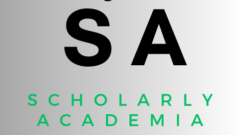COURSE:
NR546 – Advanced Pharmacology: Psychopharmacology
Preparing the Discussion
Follow these guidelines when completing each component of the discussion. Contact your course faculty if you have questions.
General Directions
Review the provided case study to complete this week’s discussion.
Include the following sections:
- Application of Course Knowledge: Answer all questions/criteria with explanations and detail.
- Select one drug to treat the diagnosis(es) or symptoms.
- List medication class and mechanism of action for the chosen medication.
- Write the prescription in prescription format.
- Provide an evidence-based rationale for the selected medication using at least one scholarly reference. Textbooks may be used for additional references but are not the primary reference.
- List any side effects or adverse effects associated with the medication.
- Include any required diagnostic testing. State the time frame for this testing (testing is before medication initiation or q 3 months, etc.). Includes normal results range for any listed laboratory tests.
- Provide a minimum of three appropriate medication-related teaching points for the client and/or family.
| Subjective | Objective |
| The client is EB an 8-year-old male accompanied by his mother.
Client’s Chief Complaints: “EB is disruptive in school and failing his classes. The school has threatened to suspend him due to his disruptive behaviors” History of Present Illness EB is an 8-year-old boy who is brought in by his mother, for an evaluation of academic difficulties and behavioral challenges. Mother reports that EB has been struggling in school, particularly with staying focused, completing assignments, and following classroom rules. She describes receiving multiple reports from EB’s teachers about his disruptive behavior, including difficulty sitting still, talking out of turn, and interrupting classmates during lessons. Mother notes that EB’s academic performance has significantly declined over the past school year, despite her efforts to provide support and encouragement at home. She reports that EB often expresses frustration and self-doubt about his abilities, leading to feelings of low self-esteem and avoidance of school-related activities. EB’s disruptive behavior and academic struggles have caused significant distress within |
Physical Examination:
Physical Examination (Obtained by Pediatrician 2 Days Earlier) Height 49″, weight: 78lb Vital signs: B/P, 100/60; P, 77; R, 16; T, 98.6 General: Well-nourished 8-year-old male HEENT: PERRLA, EOMI, vision is 20/20, and hearing acuity is unremarkable. Neck: No masses Pulmonary: No wheezing, rhonchi, or rales Cardiac: S1, S2 Abdomen: No distension, bowel sounds × four quadrants, no masses or hernias Lymph nodes: No swelling Extremities: 2+ pulses bilaterally Skin: No lesions or edema Neuro: CN II-XII intact |
Solution
Application of Course Knowledge:
Attention-Deficit/Hyperactivity Disorder (ADHD) is a neurodevelopmental disorder characterized by persistent patterns of inattention, hyperactivity, and impulsivity that interfere with daily functioning and development. In this case, EB exhibits symptoms consistent with the combined presentation of ADHD, displaying both inattentive and hyperactive/impulsive behaviors.
Selected Medication: Methylphenidate (Ritalin)
Medication Class: Central Nervous System (CNS) Stimulant
Mechanism of Action: Methylphenidate is a CNS stimulant that primarily works by inhibiting the reuptake of…………………………………………for sample solution, purchase at $10
